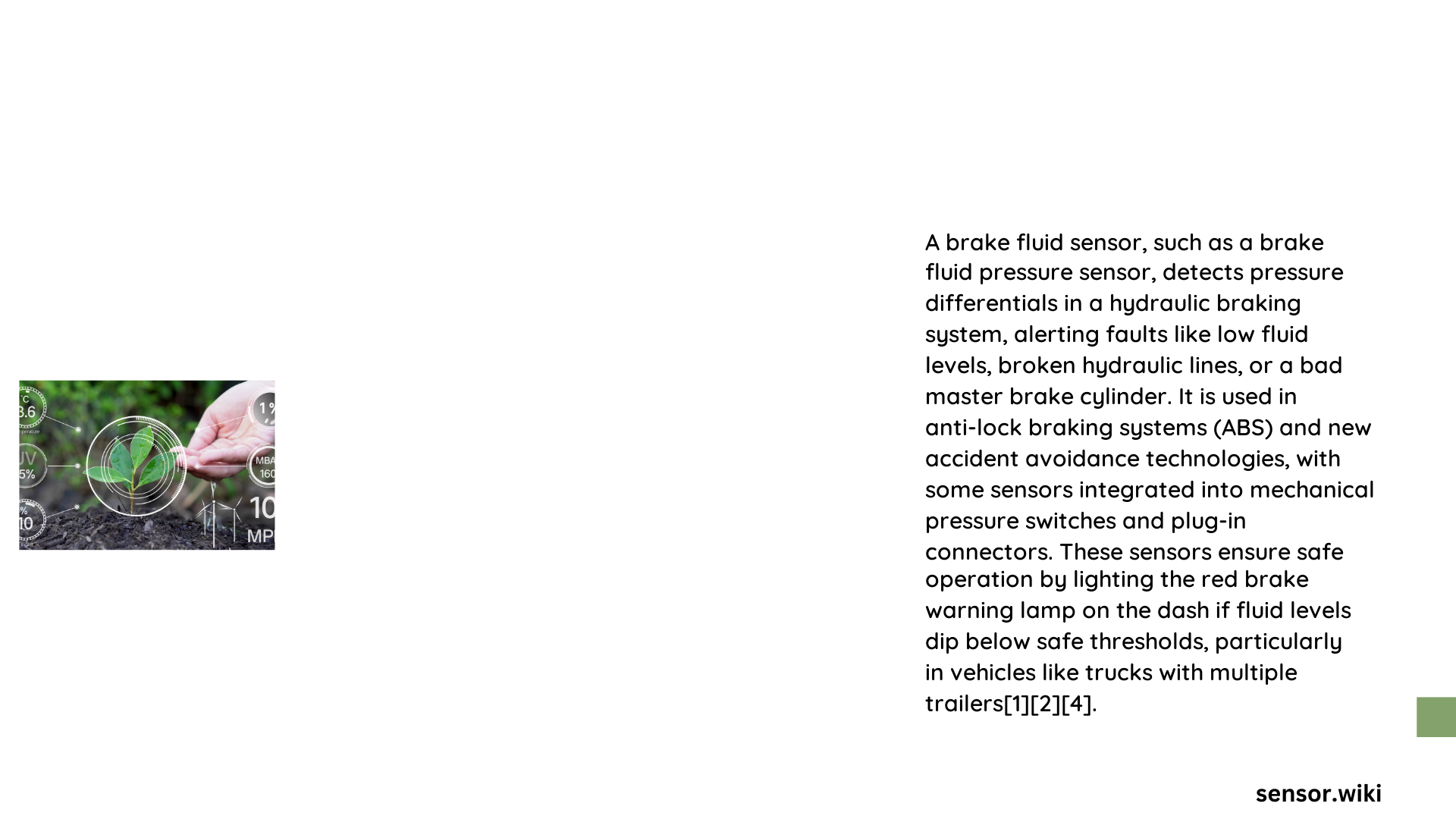A brake fluid sensor is a critical automotive component that monitors brake fluid pressure and level, providing essential diagnostic information to prevent potential brake system failures. By detecting variations in fluid pressure and volume, this sensor ensures optimal braking performance and triggers warning indicators when potential issues arise, ultimately contributing to vehicle safety and driver awareness.
What Is a Brake Fluid Sensor?
A brake fluid sensor is an electronic device integrated into a vehicle’s braking system that continuously monitors brake fluid pressure, level, and potential system anomalies. This sophisticated sensor plays a crucial role in maintaining vehicle safety by providing real-time data to the Electronic Brake Control Module (EBCM).
Key Characteristics of Brake Fluid Sensors
| Parameter | Specification |
|---|---|
| Voltage Supply | 5-volt reference |
| Signal Output | Differential reading |
| Measurement Range | 0-5 volts |
| Typical Pressure Threshold | 345 kPa (50 psi) |
How Does a Brake Fluid Sensor Operate?

Voltage and Signal Transmission
The brake fluid sensor operates through a precise electrical configuration:
- Pin 1: Low Reference (L-GN/BK 1338)
- Pin 2: Brake Fluid Pressure Signal (PU 5002)
- Pin 3: 5-Volt Reference (GY/BK 1337)
The sensor generates a variable voltage signal based on fluid pressure, which is interpreted by the vehicle’s electronic control system.
What Triggers Brake Fluid Sensor Warning Lights?
Warning lights can be activated under specific conditions:
- Signal voltage exceeds 4.9 volts
- Signal voltage drops below 0.15 volts
- Brake fluid pressure remains below 345 kPa for multiple deceleration cycles
What Are Common Brake Fluid Sensor Failure Modes?
Potential Issues
- Wiring Degradation: Internal wire breaks within shielding
- Sensor Malfunction: Incorrect pressure readings
- Electronic Control Module Problems: Interference with sensor signals
How to Diagnose Brake Fluid Sensor Problems?
Diagnostic Procedures
- Voltage Verification
- Use multimeter to check reference and signal voltages
- Confirm consistent 5-volt readings
-
Inspect voltage variations
-
Continuity Testing
- Perform comprehensive wire continuity checks
- Examine connections between sensor and EBCM
-
Identify potential electrical interruptions
-
System Bleeding
- Remove air from brake system
- Ensure accurate sensor readings
- Restore optimal brake fluid performance
What Tools Are Required for Sensor Replacement?
Essential tools include:
– Multimeter
– Torx or hex keys
– New brake fluid sensor
– Brake fluid
– Protective gloves
– Safety glasses
Step-by-Step Sensor Replacement Process
- Locate the brake fluid sensor
- Disconnect electrical connector
- Remove mounting hardware
- Install new sensor
- Reconnect electrical components
- Bleed brake system
- Verify proper operation
Recommended Maintenance Practices
- Regular brake fluid level checks
- Annual sensor performance evaluation
- Immediate investigation of warning indicators
- Professional diagnostic assessments
Technical Specifications
- Fluid Compatibility: DOT 4, DOT 5.1
- Operating Temperature: -40°F to 257°F
- Pressure Range: 0-5000 kPa
- Response Time: < 10 milliseconds
Conclusion
Understanding brake fluid sensor functionality is crucial for maintaining vehicle safety and preventing potential brake system failures. Regular monitoring, timely diagnostics, and professional maintenance can significantly enhance overall braking performance.
